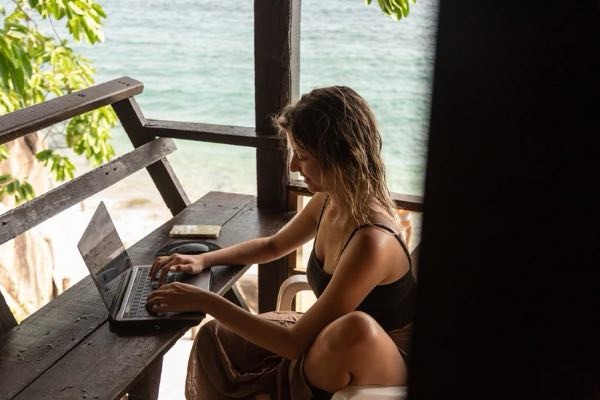The freelance revolution has been one of the most transformative shifts in the modern workforce. It’s built on one simple promise — freedom. The freedom to choose projects, clients, working hours, and even geography.

But as millions have discovered, freedom alone doesn’t always equal peace of mind. Alongside that freedom comes uncertainty — inconsistent income, fluctuating demand, and the absence of benefits that traditional jobs once guaranteed.
The art of thriving as a freelancer lies in mastering the balance between freedom and stability — and today’s generation is learning to do it smarter than ever before.
The Numbers That Tell the Story
The rise of freelancing isn’t a small movement — it’s a global economic force. According to Statista’s 2024 report, over 47% of the global workforce now participates in the gig or freelance economy in some form. India alone has over 15 million active freelancers, with industries like design, marketing, and technology leading the charge.
This growth is driven by more than just layoffs or flexible options — it’s fueled by a mindset shift. People are redefining success, moving away from job security toward career autonomy.
Yet, freedom without structure can quickly turn into chaos. Stability is the invisible pillar that allows that freedom to flourish.
The Hidden Cost of Total Freedom
Ask any freelancer what they love most, and you’ll hear words like independence and flexibility. But ask what they fear most, and the answers change — inconsistent income, no health insurance, no backup plan.
Financial anxiety is one of the most common reasons freelancers quit. A Payoneer global survey found that nearly 40% of freelancers struggle to maintain steady income streams year-round. And while creative independence fuels motivation, uncertainty can quietly drain it.
The key, therefore, is to design stability intentionally, not wait for it to appear.
Building Systems That Anchor Freedom
The most successful freelancers operate like businesses — with systems, not chaos. They set fixed work hours, use budgeting tools, and plan cash flow months in advance. Tools like Notion, Bonsai, and QuickBooks Self-Employed have made it easier to automate invoices, track payments, and plan taxes efficiently.
A healthy habit freelancers adopt is maintaining a 3–6 month emergency fund, ensuring creative freedom never feels like a financial risk. Structure, far from limiting freedom, actually amplifies it.
Diversifying Income Streams
In the freelance world, relying on one client is as risky as a company relying on one product. Smart freelancers diversify. They create digital courses, write eBooks, consult part-time, or start small side businesses.
For example, a freelance designer might sell templates on Etsy or Gumroad, while a content writer might offer brand storytelling workshops. These parallel income streams not only stabilize finances but also build credibility and passive revenue.
Freedom becomes sustainable when it’s underpinned by diversity.
The Emotional Balance Sheet
Freelancing isn’t just an economic shift — it’s an emotional one. The highs of winning a new project can be followed by weeks of silence. The thrill of independence can coexist with moments of isolation.

To sustain the journey, freelancers need emotional discipline as much as financial planning. Joining online communities, co-working hubs, or even mastermind groups helps create a sense of belonging. Networking isn’t just for finding clients — it’s for finding perspective.
Lessons from the Field
Take Rashmi, a freelance UX designer from Pune. She began her career struggling with irregular payments and burnout. But she turned things around by building a predictable routine — billing in advance, scheduling monthly retainers, and keeping weekends strictly offline. Today, she earns more than she did in her corporate role and enjoys a balance that many envy.
Her story underscores a universal truth: structure protects creativity.
What Balance Really Means
Balancing freedom and stability doesn’t mean sacrificing one for the other. It’s about creating rhythm — knowing when to take risks and when to ground yourself. It’s about mixing passion projects with practical ones, and maintaining the financial base that allows creativity to breathe.
Freelancers who last a decade or more are rarely the ones with the most talent. They’re the ones with the best systems — and the discipline to stick to them.
The Future Belongs to the Self-Managed
In a world that’s shifting toward self-employment, balance will be the defining skill. Those who learn to merge autonomy with structure will not just survive — they’ll lead.
The freelance economy isn’t about escaping jobs. It’s about redesigning work. And the freelancers who master that balance will be the architects of a new professional era — one where freedom and stability coexist beautifully



